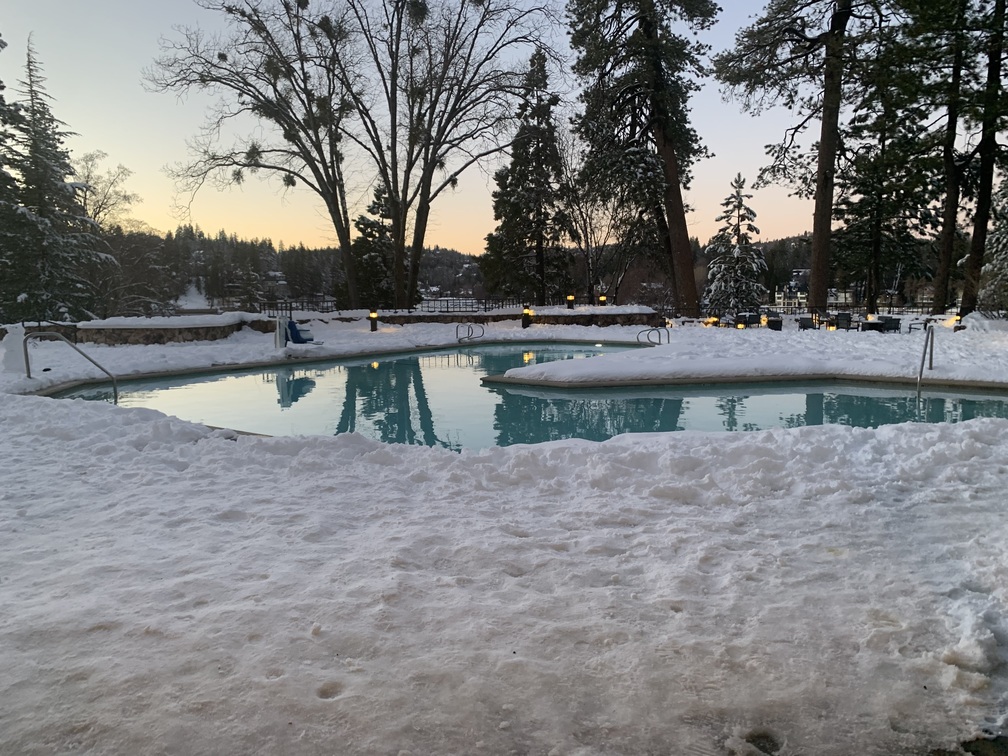Lake Arrowhead, a picturesque reservoir in the San Bernardino Mountains of California, is currently not at full capacity. As of October 3, 2024, the lake’s water level stands at 5106.31 feet above sea level, which is 0.39 feet below its full lake elevation of 5106.70 feet. This article explores the current water status of Lake Arrowhead, examining factors affecting its water levels, and providing insights into its water management.
What is the Current Water Level of Lake Arrowhead?

As of the latest data available, Lake Arrowhead’s water level is:
- Full Lake Elevation: 5106.70 feet above sea level
- Current Elevation: 5106.31 feet above sea level
- Difference: 0.39 feet below full capacity
While the lake is not completely full, it is important to note that it is very close to its maximum capacity. This near-full status is significant, especially considering the challenges many California water bodies face due to drought conditions.
How Does Lake Arrowhead’s Water Supply Work?

Lake Arrowhead’s water supply system is unique and worth understanding:
- Sole Water Source: Precipitation is the only natural source of water for Lake Arrowhead.
- No Imported Water: Unlike many other California lakes, Lake Arrowhead does not receive water from external sources or aqueducts.
- Closed Basin: The lake is situated in a closed basin, meaning water does not naturally flow in or out of it.
- Managed Outflow: Water release is controlled and managed for downstream users and environmental needs.
This closed system makes Lake Arrowhead particularly sensitive to local weather patterns and precipitation levels.
What Factors Affect Lake Arrowhead’s Water Levels?
Several factors contribute to the fluctuation of water levels in Lake Arrowhead:
- Precipitation: As the sole source of water, rainfall and snowmelt are crucial.
- Evaporation: Especially significant during hot, dry summers.
- Water Usage: Local consumption for residential and recreational purposes.
- Managed Releases: Controlled outflows for downstream needs.
- Maintenance Activities: Occasional lowering for dam or shoreline maintenance.
How Do Seasonal Changes Impact Lake Arrowhead’s Water Level?
Seasonal variations play a significant role in Lake Arrowhead’s water levels:
- Winter: Typically sees increased water levels due to rainfall and snowmelt.
- Spring: Often maintains high levels from winter precipitation.
- Summer: Levels may decrease due to increased evaporation and recreational use.
- Fall: Water levels can vary depending on late summer rains and early winter storms.
However, it’s important to note that specific historical data on seasonal fluctuations is not provided in the available sources.
What Measures Are in Place to Manage Lake Arrowhead’s Water Supply?
The Lake Arrowhead Community Services District (LACSD) has implemented several strategies to manage the lake’s water supply:
- Diversified Water Portfolio: LACSD has developed multiple water sources to meet demand.
- Conservation Efforts: Encouraging responsible water use among residents and visitors.
- Monitoring Systems: Regular tracking of lake levels and water quality.
- Planned Maintenance: Occasional lowering of lake levels for necessary maintenance work.
How Does Drought Impact Lake Arrowhead?
While specific data on recent drought impacts is not provided in the sources, it’s important to understand the potential effects:
- Reduced Water Levels: Extended dry periods can lead to lower lake levels.
- Increased Evaporation: Higher temperatures during droughts can accelerate water loss.
- Stricter Conservation Measures: May be implemented during severe drought conditions.
- Potential Recreational Impacts: Low water levels could affect boating and other water activities.
What is the Future Outlook for Lake Arrowhead’s Water Levels?
Predicting future water levels for Lake Arrowhead is challenging due to various factors:
- Climate Variability: Changing weather patterns can affect precipitation levels.
- Water Management Practices: Ongoing efforts by LACSD to maintain sustainable water levels.
- Community Engagement: The role of local residents and visitors in water conservation efforts.
While specific projections are not available in the provided sources, the current near-full status of the lake is a positive indicator of its management and resilience.
How Can Visitors and Residents Help Maintain Lake Arrowhead’s Water Levels?
Everyone can play a part in preserving Lake Arrowhead’s water supply:
- Practice Water Conservation: Use water responsibly in homes and during recreational activities.
- Stay Informed: Keep up-to-date with local water regulations and advisories.
- Report Issues: Alert authorities to any observed water waste or leaks.
- Support Local Initiatives: Participate in community water conservation programs.
- Educate Others: Share knowledge about the importance of water conservation in the area.
By understanding the unique characteristics of Lake Arrowhead’s water system and actively participating in conservation efforts, both visitors and residents can contribute to maintaining this beautiful mountain lake for future generations.
Reference:
1. https://www.lakearrowheadcsd.com/our_water/water_supply/lake_level.php
2. https://lacinc.org/notification-of-planned-lowering-of-lake-arrowhead/
3. https://www.ala-ca.org/lake_level.php
